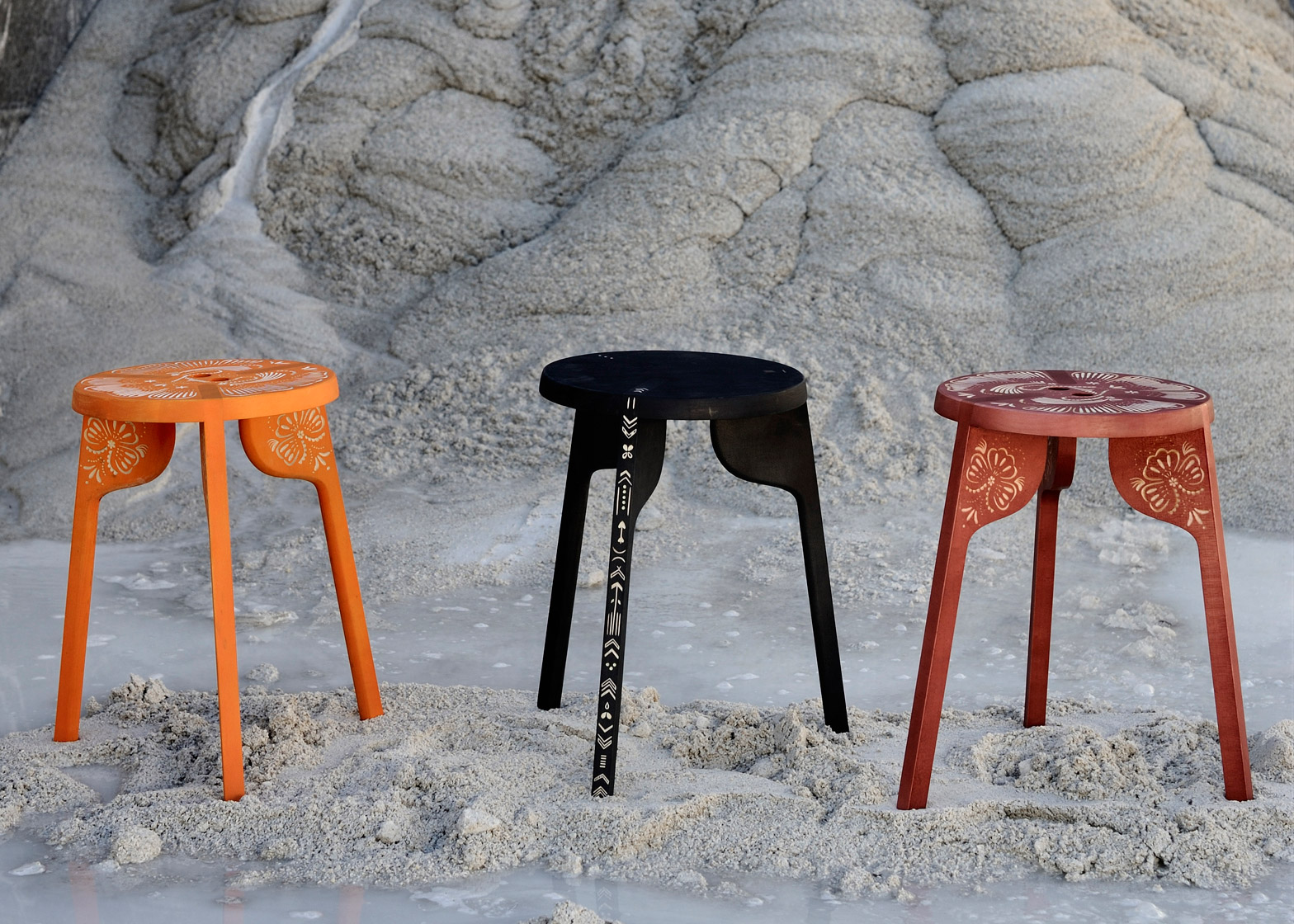This wooden stool designed for Bosnian brand Zanat by Swedish architects office Wingårdhs has been "tattooed" with hand-chiselled carvings.
The Bosnian carving tradition is included in UNESCO's World Intangible Cultural Heritage List – which draws attention to unique cultural skills in need of preservation.
"Bosnia and Herzegovina has some of the most talented woodworkers in the world," said Wingårdhs.
"In order to develop the traditions, Zanat has engaged outside designers and together they have grown the shop to become a significant part of the Bosnian economy."
The studio's Tattoo stool comes in various light and dark woods, either varnished or untreated, and with three or four legs.
Each of the seats is stackable, and can be purchased according to the level of decoration desired by the owner.
"Wingårdh Architects has designed furniture for Zanat in the past, but the little Tattoo stool is our first to take full advantage of the Bosnian craftsmen's skill with a chisel," said the firm, which is behind architecture projects that range from a controversial Stockholm high-rise to a thatched lakeside visitor centre.
The Sleeve design features carving down the legs, while the Full Body version has decoration across the seat as well.
For those looking for more minimal decoration, the First Tattoo edition features just a single unobtrusive carving at the top of one stool leg.
Zanat's design director Monica Förster also used the area's traditional skills for a collection of wooden furniture and accessories.
Each of the pieces was hand carved using a special set of tools, in a traditional practice that had similarly been marked as a candidate for the UNESCO list.
Swedish designers Glimpt are another studio to use craft skills, for a collection of coffee tables that featured bases hand-carved by Peruvian woodworkers.
Other recent stool designs include Kristine Five Melvær's Vava, which features zigzagging wooden legs, and Satsuki Ohata's vivid yellow PVC seating, designed to look like melting cheese.

